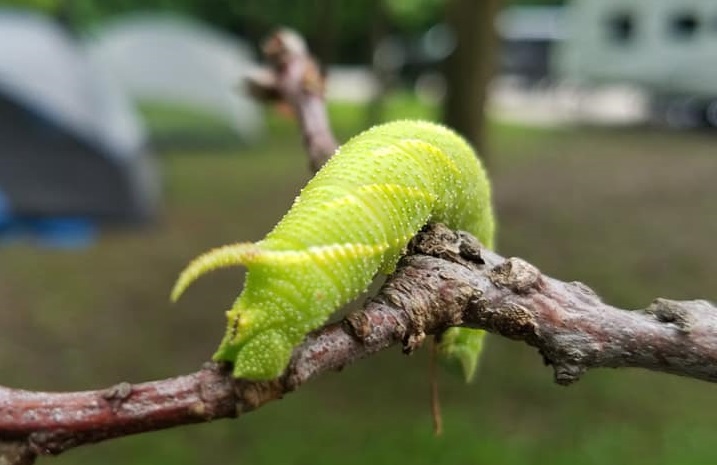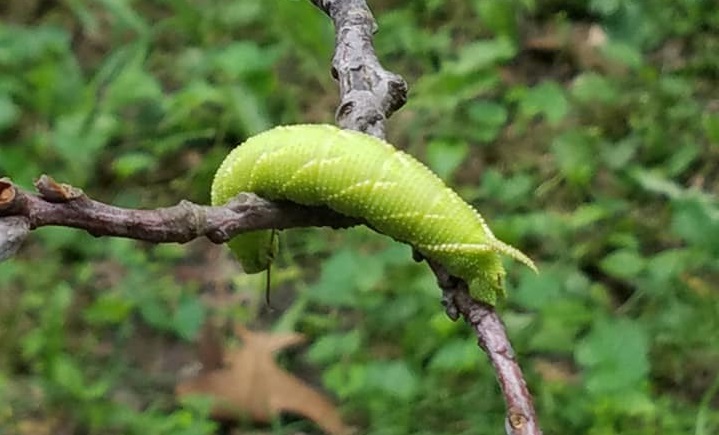ECOLOGY ▪ EDUCATION ▪ ADVOCACY
Sphinx: Named for the resemblance of the caterpillars to an Egyptian Sphinx.
Chersis: Named from the Greek chers meaning “dry land.”
Sfinks CHER-sihs
Pennant Marked Sphinx, Northen Ash Sphinx, and Chersis Sphinx
This map shows the confirmed sightings of the Great Ash Sphinx in Indiana. All sightings were confirmed through photographic documentation by individuals who contributed to the Great American IN Nature Lepidoptera Project (GAIN LP).
 |
GAIN LP documented in county. |
| Date | County | Observer | Notes | Image1 | Image2 |
|---|---|---|---|---|---|
| 2018-06-14 | Harrison | Brengman, Jacie | Caterpillar |
 |

|
| Observation Details | Images |
|---|---|
| Date: 2018-06-14 County: Harrison Observer: Brengman, Jacie Notes: Caterpillar |

 |
Great Ash Sphinx seems to be in decline in its range and lepidopterists are reporting fewer of them in the last few decades.
Reasons: “As this species is currently defined, it is or was the most widespread of the North American ash-feeding Sphingidae. However it has become quite rare to undetectable in recent decades in about the southeastern quarter (or more) of the range. As with all of the ash-feeding Sphingidae unless the Emerald Ash borer is controlled, Sphinx chersis is among the several Sphingidae at risk of extirpation over very large areas, and of extinction if that pest establishes range-wide.”
The Great Ash Sphinx caterpillars host on a variety of trees and shrubs but seem to prefer plants in the Olive (Oleaceae) family. Adult moths feed on nectar.
| Known Larval Food Sources in Indiana | ||
| Family | Taxonomic Name | Common Name |
|---|---|---|
| Order: Cornales | ||
| Cornaceae | Cornus spp. | dogwoods |
| Order: Fagales | ||
| Betulaceae | Betula spp. | birches |
| Order: Gentianales | ||
| Rubiaceae | Gardenia spp. | gardenias |
| Order: Lamiales | ||
| Oleaceae | Chionanthus virginicus | fringetree |
| Fraxinus spp. | ashes | |
| Ligustrum spp. | privets | |
| Syringa spp. | lilacs | |
| Order: Rosales | ||
| Rosaceae | Prunus spp. | cherries |
| Order: Salicales | ||
| Salicaceae | Populus spp. | poplars |